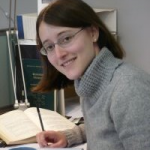Thursday, November 12, 2020
Invited talk by Prof. Michael Wimmer,TU Wien, Research Unit of Computer Graphics
Title: “Applications of Smart Graphics”
Abstract: For a long period of time, the focus of computer graphics was mostly the quality and speed of image generation. Meanwhile, commercial rendering engines leave little to be desired, but computer graphics research has expanded to solve application problems through so-called “smart graphics”. In this talk, I will present some of our latest advances in “smart” computer graphics in simulation, rendering and content generation. I will show how we can now simulate visual impairments in virtual reality, which could be used to create empathy for people affected by these impairments. I will describe how we have advanced point-based rendering techniques to allow incorporating real environments into rendering applications with basically no preprocessing. On the other hand, virtual environments could be created efficiently by collaborative crowed-sourced procedural modeling. Finally, efficient simulations of floods and heavy rainfall may help experts and increase public awareness of natural disasters and the effects of climate change.

Bio: Michael Wimmer is currently an Associate Professor at the Institute of Visual Computing and Human-Centered Technology at TU Wien, where he heads the Rendering and Modeling Group and directs the interdisciplinary Center for Geometry and Computational Design. His academic career started with his M.Sc. in 1997 at TU Wien, where he also obtained his Ph.D. in 2001.
His research interests are real-time rendering, computer games, real-time visualization of urban environments, point-based rendering, reconstruction of urban models, procedural modeling and shape modeling.
He has coauthored over 145 papers in these fields. He also coauthored the book Real-Time Shadows. He regularly serves on program committees of the important conferences in the field, including ACM SIGGRAPH and SIGGRAPH Asia, Eurographics, IEEE VR, Eurographics Symposium on Rendering, ACM I3D, SGP, SMI, HPG, etc. He is currently associate editor of ACM Transactions on Graphics, CGF, and Computers & Graphics. He was papers co-chair of EGSR 2008, Pacific Graphics 2012, Eurographics 2015, Eurographics GCH 2018 and VMV 2019.
Friday, November 13, 2020
Invited talk by Dr. Julie Digne, CNRS LIRIS, Université Claude Bernard Lyon 1
Title: “Self similarity for shape analysis and synthesis”
Abstract: In this talk I will describe ways of taking into account shape self-similarity for improving analysis and synthesis tasks. Indeed shape acquisitions produce a possible sampling of a shape but by identifying similar parts of the shapes, one can enhance the local sampling and improve the shape locally.
In the second part of this talk, I’ll discuss an issue common to many computational sciences fields: research reproducibility. I’ll take the example of computer graphics for which we ran a thorough analysis studying the availability and the proper functioning of research codes over three years of papers published at SIGGRAPH (2014,2016,2018). Our analysis shows an improvement in reproducibility with variations with respect to the subfield.
Related work
[1] Similarity based filtering of point clouds, J. Digne, 2012
[2] Self-similarity for accurate compression of point sampled surfaces, J. Digne, R. Chaine, S. Valette, 2014
[3] Sparse Geometric Representation Through Local Shape Probing J. Digne, S. Valette, R. Chaine, 2018
[4] Super-resolution of Point Set Surfaces using Local Similarities, A. Hamdi-Cherif, J. Digne, R. Chaine, 2018
[5] Code Replicability in Computer Graphics, N. Bonneel, D. Coeurjolly, J. Digne, N. Mellado, 2020.
 Bio: Julie Digne is currently a CNRS Researcher at LIRIS (équipe Origami). She obtained a PhD in Applied Mathematics from École Normale Supérieure de Cachan in 2010 with Jean-Michel Morel. She graduated from both ENS Cachan (master MVA) and Télécom ParisTech (engineering degree). In 2018 she defended her Habilitation à Diriger des Recherches. Julie research interests lie in the field of surface processing and surface analysis, in particular when the surfaces are represented as point clouds. It includes surface denoising, meshing, scan merging and surface segmentation. Julie is particularly interested in developing machine learning approaches for geometric data.
Bio: Julie Digne is currently a CNRS Researcher at LIRIS (équipe Origami). She obtained a PhD in Applied Mathematics from École Normale Supérieure de Cachan in 2010 with Jean-Michel Morel. She graduated from both ENS Cachan (master MVA) and Télécom ParisTech (engineering degree). In 2018 she defended her Habilitation à Diriger des Recherches. Julie research interests lie in the field of surface processing and surface analysis, in particular when the surfaces are represented as point clouds. It includes surface denoising, meshing, scan merging and surface segmentation. Julie is particularly interested in developing machine learning approaches for geometric data.